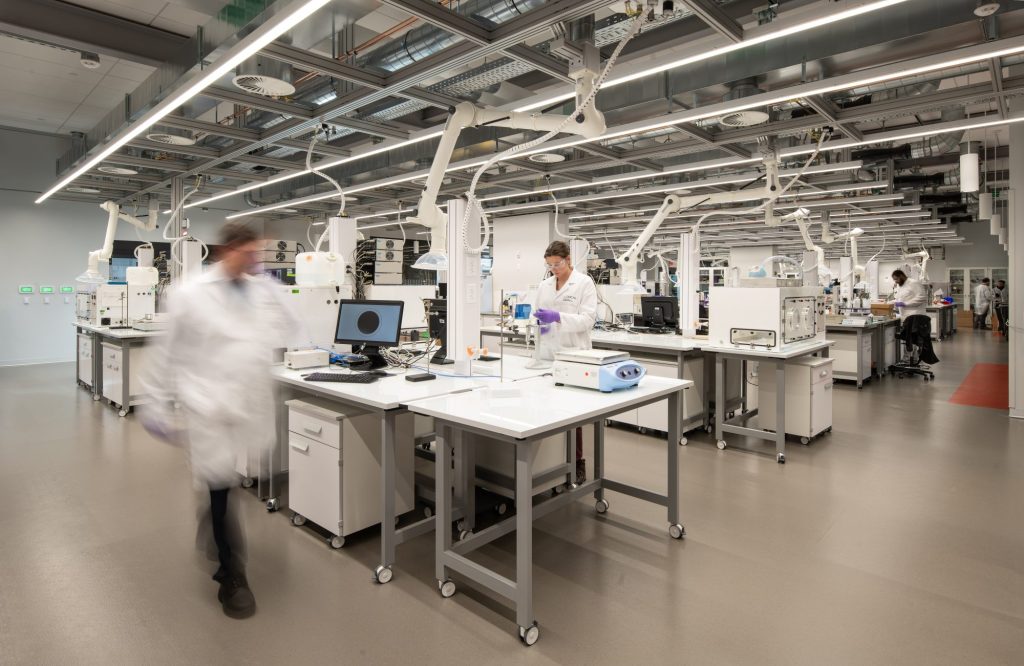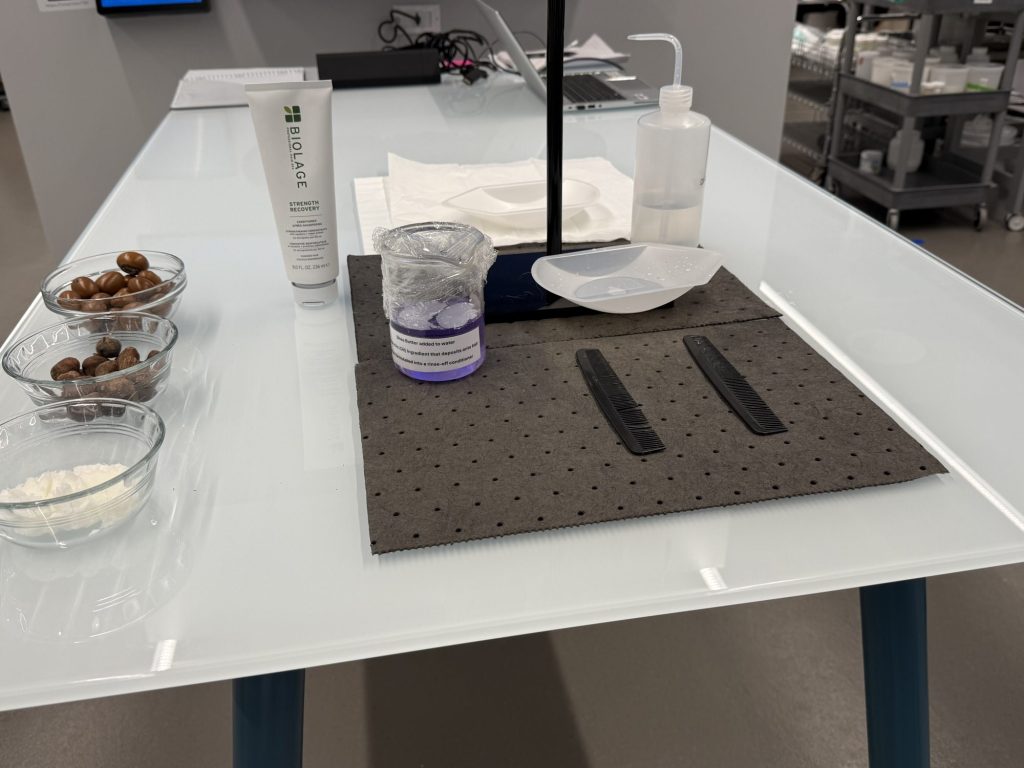One of L’Oreal’s most complex environmental goals is a push to replace petrochemicals — widely used in cosmetics for their moisturizing and blending properties — by relying on plants, minerals and recycled materials for 95 percent of its ingredients by 2030.
As of the French conglomerate’s latest progress report, for 2024, the category leader in cosmetics and personal care — with sales of $45 billion — has managed to reach 66 percent. That achievement is linked to its decision to embed “eco-design” principles into its 4,000-person research and innovation team more than eight years ago.
All new products for 2023 and 2024 were evaluated using the company’s proprietary Sustainable Product Optimization Tool, which considers 14 different environmental metrics as part of ingredients sections.
More recently, the ecodesign strategy inspired a new perfume made with fragrance collected from flowers using a water-free extraction system. It also drove the refinement of a vertical farm system that lets L’Oreal cultivate plants for its cosmetics using less land, water and energy. Both innovations address another L’Oreal goal: use recycled water for 100 percent of its industrial processes. So far, the company has achieved 53 percent.
“Our performance as a business cannot be separated from our performance from an environmental and social perspective,” said Marissa McGowan, chief sustainability officer at L’Oreal North America. “I would also say innovation is the mindset of continually striving to do better and continually striving to meet new needs, and sustainability is sort of synonymous with innovation.”

Dedicated space to nurture breakthroughs
Much of the ecodesign work for North American products happens at L’Oreal’s 250,000-square-foot scientific research center in Clark, New Jersey, which opened in February. The facility employs 600 scientists and engineers, who have been challenged to use 12 principles of “green chemistry” on behalf of research intended for the U.S. market. (The lab is responsible for about 20 percent of L’Oreal’s formulations globally.)
McGowan meets with the head of that lab at least monthly to review goals on a brand-by-brand basis. The goal is to prioritize substances that are biodegradable, found in nature and require less energy and water — for both production and consumption.
For example, L’Oreal is leaning into shea butter, which it sources from trees and seeds grown by Burkina Faso communities in West Africa. The substance features prominently in more than 1,700 products, including a new Biolage professional salon line that restores nutrients to damaged or colored hair without using paraben (a known endocrine and hormone disruptor), silicone or mineral oil. L’Oreal scientists developed a way to concentrate the butter, so less of it needs to be used, a process they demonstrated during my September visit to the Clark facility.
Another breakthrough is glycolysine, a patent-pending, bio-based surfactant used in the new CeraVe Air Foaming Cleanser, launched in summer 2025. The substance replaces synthetic substances that can be skin irritants. It’s made from a combination of glycolipids from plants or fungi, and polylysine, an amino acid polymer. The cleanser doesn’t require water to create the foam: a special pump mixes air with the product as it is dispensed, creating bubbles.
Each brand is responsible for its own environmental design priorities, but CeraVe’s growth has exploded over the past five years to more than $2 billion globally, and that’s one reason its work gets special attention. L’Oreal studies the potential ripple effect of an innovation when deciding where to prioritize.
“We do have a brand-by-brand approach, but once that technology comes through in one brand, we look to see how we can scale it across the portfolio and it becomes available for all the brands,” McGowan said.

New cultivation and extraction technologies
L’Oreal’s product-agnostic approach to ecodesign is illustrated by two technologies under development for several years and formally introduced this summer.
Osmobloom, created through a partnership with Cosmo International Fragrances, is an air-capture system for extracting fragrance molecules from flowers while leaving the bloom intact. Traditional approaches use steam, solvents and fats to absorb the fragrance. The equipment uses less energy, water and chemicals. It also enables L’Oreal to harvest flowers that were previously considered “mute,” such as lily of the valley and hyacinth, and those from the iconic orange blossom and tuberose. The first product to result from the innovation: a perfume, Private Talk from Valentino Beauty, made from tuberose plants. L’Oreal has 12 ingredients under development.
At the end of the Osmobloom extraction, the flower is intact and can be used for other applications — such as an ingredient in herbal tea. “We’re adding to the supply chain, not taking away,” said McGowan.
Another technology that will be used across brands is an early-stage, artificial intelligence-powered vertical farm called BioPods developed by Interstellar Lab, a startup that was part of L’Oreal’s innovation accelerator program.
BioPods use 99 percent less water than traditional farming methods, by recycling water, and also capture carbon dioxide. They were initially created for applications in outer space, but L’Oreal sees the technology as important for growing plants in territories impacted by climate change. BioPods will also allow for more cultivation near production facilities.
In recent demonstrations, BioPods were used to grow Centella asiatica, which produces an ingredient called madecassoside, a compound with anti-inflammatory, antioxidant and anti-aging properties.


